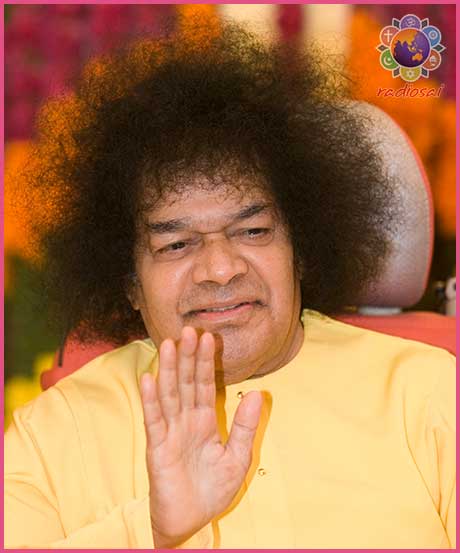| 'Like' us on Facebook | Follow us: |
Posted on: Jan 15, 2018
LET US BEGIN OUR NORTHWARD JOURNEY
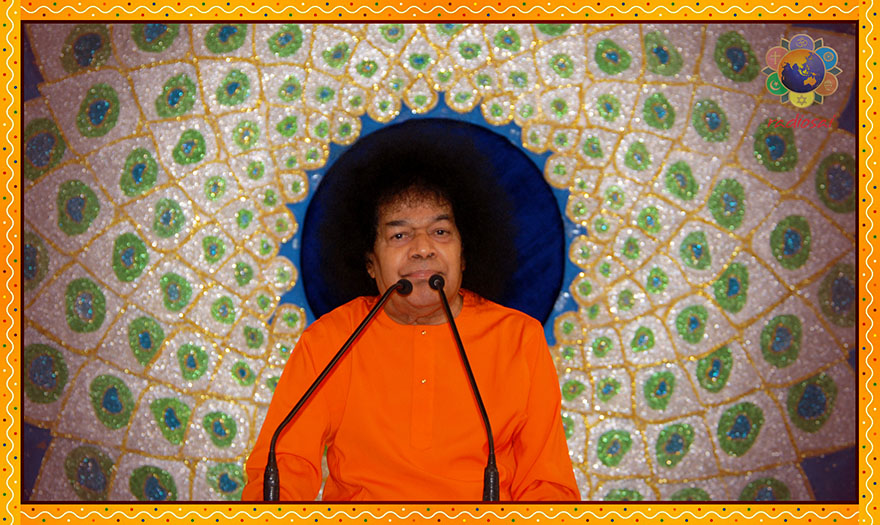 |
Sankranti or Makara Sankranti to be more precise is one of the most important festivals in the Bharatiya calendar. It is an observance of significance in a worldly as well as a spiritual sense. It is often celebrated as a festival of thanksgiving, where the farmer thanks the forces of nature, governed by the Sun God, for the bounteous harvest. Sankranti also marks that time of the year when the Sun begins its northward journey as we observe in the sky. This event is referred to as the Uttarayana. This period is said to be very conducive for undertaking activities of spiritual significance and purpose. But what is the relationship between the movement of the Sun and one's spiritual progress? Interestingly, Sankranti is one of the few Indian festivals that is celebrated with reference to the movement of the Sun. So, there is more to what Uttarayana means to a spiritual seeker.
As part of Summer Course in Indian Culture and Spirituality held in 1991, Swami delivered discourses that were based on various Upanishads, a few of which were on the Prasnopanishad. In one of those discourses, the one delivered on 27 May 1991, Swami explained what the Uttarayana represents. As we step into this significant period of the year, we wish to share excerpts from that discourse to explain this subtle concept from the Vedas. The entire explanation is presented based on the questions posed to Sage Pippilada by his disciples. We will also try to explain certain points which Swami does not elucidate in this particular discourse. Let us pray that these words of wisdom inspire us to embark on our own Uttarayana.
The Endless Cycle Began When the One Gave Rise to Two
|
Download Embodiments of Love, students! Ekoham Bahusyam (I am One; let Me be many). With the noble resolve of Prajapati, the pairs of the unseen basis and the based gross (Moolam and Sthulam), the inert and the conscious (Jada and Chaitanya), the life-force and the living being (Prana and Prani), were created, and through their interplay the whole world, the moving and unmoving creation and the Universe came to be created. Hence, it was propounded that for this Universe consisting of moving and unmoving entities, the Sun which is like the Prana and the Moon which is like the Prani is the source. |
One of the first questions posed to sage Pippilada was about the source of creation. How did the creation we see manifest? And in reply, the sage explains how everything came forth from Prajapati, the God of all creatures. And from Him came the pairs mentioned above. Among them the one of importance for us is Prana and Prani, the life-force and living beings. Each of us is a combination of these two. As an individual we are a living being or Prani, but the moment the life-force leaves the body, we become a corpse. So the Prana is the hidden essence of all life. The life-force is the Moolam or basis, it is Chaitanya or the conscious; the beings as we see them are the Sthulam or gross and inert or Jada by nature. So as we can see, the different pairs mentioned are just descriptions of the Prana and Prani.
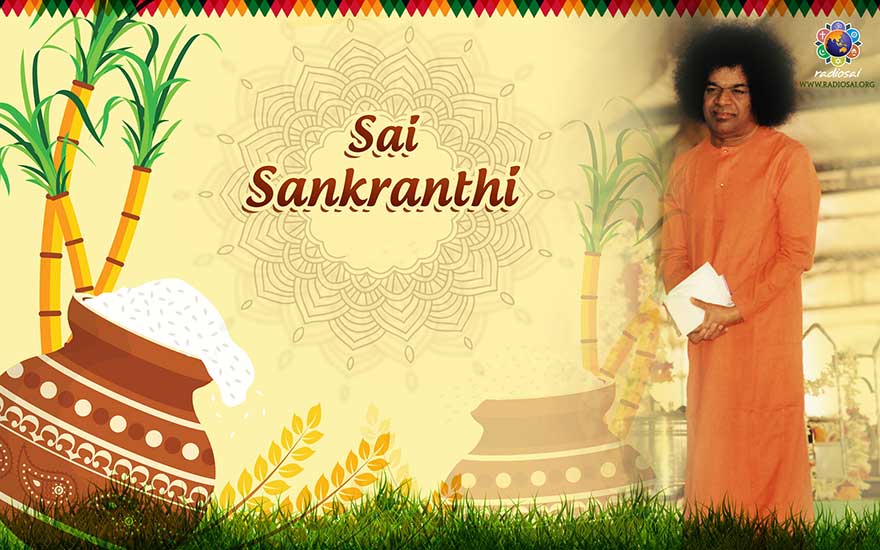 |
The Sun, Moon and Our Life
The correlation between the Prana-Prani, and the Sun and Moon is a profound concept and an important basis to understand the concept of Uttarayana. The Prana is a spark of the Divine and the Divine has no source, it is self-sustained; meaning it does not depend on anything else to exist. Whereas the Prani depends on the Prana to be ‘alive’ (like in the example of an individual becoming a corpse when the Prana leaves the body). The early man in his explorations observed that the Sun was a self-effulgent celestial object, whereas the Moon reflected the effulgence of the Sun and appeared luminescent. This observation led to this representation or worship of the Sun as the source of life, and the moon as a representative of the unreal aspect of the world, what is referred to as Mithya. So the Sun was considered the Prana and the moon the Prani. The entire creation comes about through the play of these two, just like how our earthly life is governed by the movement of the Sun and Moon. Swami explains:
|
Download |
Much of the knowledge of early man came from astute observation, of patterns in nature, behaviour of other life forms and most importantly one’s own mind. This led to correlating some of the changes in the mind with movements of celestial bodies. This forms the basis of the science of astrology too. But sticking with the Sun and Moon, it was observed that the mind is in a far clearer and sharper state during the day. The mind is more cheerful during a bright sunny day and a happy mind is likely to make better choices. Of course, today we know from research that Sunlight directly affects the production of Serotonin in the human body, a neurotransmitter that keeps the individual happy and hopeful. The body produces more of this chemical on sunnier days. Hence the months on which the days were longer were considered more conducive for performing important tasks. As the Uttarayana is that half of the year when the days are longer than nights, it was considered more auspicious, and a period of hope and happiness. In comparison, Dakshinayana was considered unsuitable and inauspicious for important works. That is one of the reasons Swami would remind us that the Uttarayana is the time we must pick ourselves up and resolve to walk the spiritual path.
Aspirants who seek to travel during the dakshinayana, perform various rituals and acts of charity and embark in the ‘southerly’ direction. Thus travelling they reach the 'Moon'. Moon is ‘rayee’ or matter. Through worldly desires, worldly aspirations and worldly comforts the world alone can be attained, not God. As long as the merit of one’s deeds last, one will be in the world of the Moon, and once the merits are exhausted they will descend back to earth. Download |
The Uttarayana Each of Us Must Embark Upon
This is the point when we have to understand the spiritual usage of the term Uttarayana. In the clips above, Swami is not speaking about the northward movement of the Sun, but the aspirants move towards the Sun, or the Prana. As it was explained, the Uttarayana half of the year was considered auspicious for the beginning of any new and noble initiative. (Talking of auspicious beginnings, interestingly, Swami laid the foundation stone for the Prasanthi Nilayam ashram on the Sankranti of 1948). And in the days of yore, if a task had to be performed and one could not wait till the Uttarayanam, certain yajnas, worships and acts of charity were prescribed. These were not necessary during the Uttarayana, as one depended on the Sun. It is from this point Swami explains the spiritual Uttarayana.
Man does good actions inspired by many intentions. One may seek good results for those actions in return, some seek a better life after death, few are inspired to act purely with the ultimate goal in mind. The good deeds may be similar in nature, but the intentions make them different in principle. The scriptures say that one, who performs noble deeds with benefits the world can give him in mind, is on the path of Dakshinayana, meaning his endeavours are directed towards the Moon (from the idea that Dakshinayana is a period when the moon occupies more time in the sky). And when we say directed towards the moon, we mean he does these acts with the desire to obtain not the source of all illumination, but reflected illumination.
The value of all material wealth is purely notional. A diamond is more valuable than a piece of charcoal because we consider it so. A currency note is more valuable than a piece of paper because we, as a society have chosen to ascribe a value to it. It has no value of its own and so is the case with all material wealth, position, name and fame. Seeking to fill one’s life with these is akin to depending on the Moon to embark on a journey. And the Upanishads say that one who does good deeds in the world inspired by such motives, though better than those who indulge in evil acts, will only reach the Chandraloka or heaven. And as Swami beautifully explained, heaven is not a permanent destination, but a place one enjoys till one exhausts the merits of one’s actions.
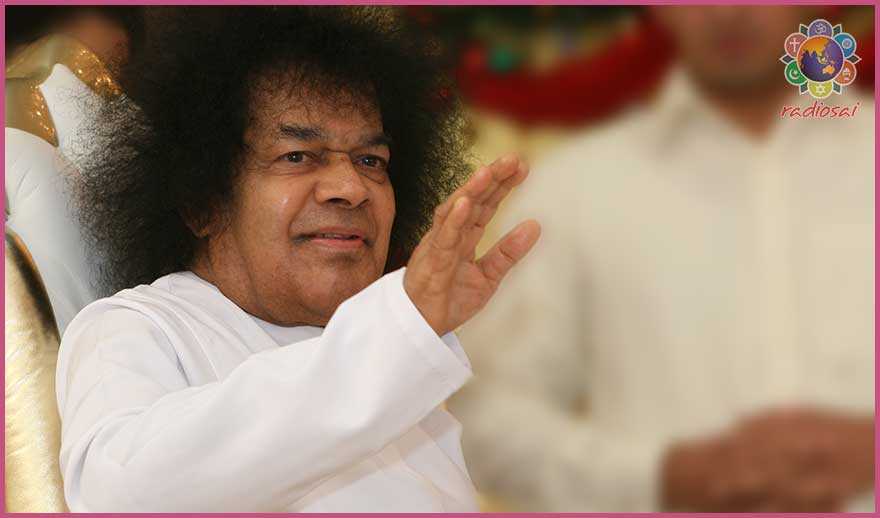 |
But the one who performs noble deeds, Sadhana and leads a good life with the goal in mind, with the desire to reach the Brahman alone, does not reach a temporary heaven but reaches the Suryaloka from where one does not return to the mortal plane. The Sun represents the self-luminescent Atma, and reaching the world of the Sun is a cryptic way of saying that this spark within, the Prana, merges with the cosmic Prana, never to return into the cycle of birth and death. And the aspirant who takes on the journey of life in this manner is on the path of Uttarayana.
The Inescapable Cycle
But what does it take to break free from this cycle of birth and death? Is it really possible? Is there a practical way of achieving this? Swami explains as we listen further. But before that Swami explains how this journey is continuous and, death and birth are just periodic occurrences and not an end.
|
Download
Therefore, the creation is not bound by any boundaries or limitations. In the beginning, there were only the two entities, the being and the life-force. The coming together of these two aspects is the basis for the vast creation. There is no end for this world. But there is no beginning either! When this infinite Divine will is mistaken to be Pranis or the living beings, we believe that life forms have an end. Death cannot be avoided, nor can birth be, but the individuals have the power and skill to ensure there is no birth after death. The end is in our hands. There is a small seed, say a green gram. This small seed when sown in the ground sprouts and eventually bears many fruits. But none can say when the green seed took birth, who is its father, grandfather or ancestors are. Who knows how long it has been born as a green gram seed. Nobody can know the beginning. But once the seed is put in mouth and eaten, the end is in our hands! Hence the beginning is unknown to us but the end is in our hands! |
There is a Solution and It is Within Grasp
The secret to eternal life cannot be explained in a simpler way isn't it? When the husk of desire is removed from the paddy, the grain can no more sprout. And how encouraging it is to know that the ability to put an end to this is within the grasp of each of us? The Lord Himself gives us that assurance. The trick is in holding on to the goal through the entire process. When we progress spiritually many a temptation come by, worldly fame and respect for instance. We must have the maturity to look at it as the light of the Moon, merely a reflection of what we seek, and keeping our mind fixed on the source of the glory and march on. Many great spiritual masters caution about this test aspirants are put through. When one performs Sadhana for an extended period with sincerity and regularity, one may acquire certain superhuman abilities called Siddhis. It could be something as simple as string intuition or as stunning as the ability to materialise objects. Such powers can make the Sadhaka a centre of attraction for the people of the world. One has to overlook such things as trivial and march on.
For that matter, even we as devotees of Swami we may have the opportunity to gain traction among others. Someone may look up to us and say, ‘Oh he is a student of Swami, here is a great devotee who has been visiting Prasanthi Nilayam for many decades and so on…’ It is easy to get carried away by such attention, and with time we may tend to try to live up to people’s expectations rather than Swami’s. If we wish to embark on the Uttarayana, we must constantly remind ourselves of the goal, the purpose and the Source. If not, we may attain Rayee - the alluring yet dull reflected light of the Moon, but not the true Kanti or Sunlight!
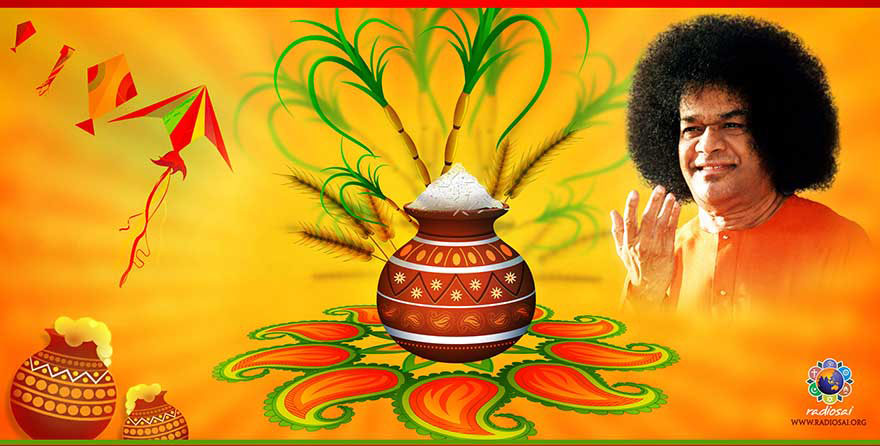 |
In the clips to follow Swami further explains why every intention, every desire needs to be sublimated. Because these and these alone decide what comes to us in our lifetime and in future lives.
|
Download “I will do this, I will attain that and I will do many more things” – |
Do What You May, But Do it This Way
If every act that we perform is going to follow us, good for good and bad for bad, what is the way out? Even if we were to live a life saturated with goodness, it only ensures a brief stay in heaven and a heavenly birth thereafter. How then do we put an end to this cycle? As Swami would explain, the entire bank of Karma we have is called Sanchita Karma, from that huge pile that has been gathered over many lifetimes we choose a certain life which will help us work out a part of that Karma pile. And that small portion of Karma that will define our life is called Prarabdha Karma. As we go through this life, we work out that Prarabdha. But even as we do that, through our actions in the present, our reaction to our present plight, our anger, despondency we end up doing actions that add to our pile of Karma. These actions of the present are called Aagami Karma. Now that does seem like a hopeless situation to be in. Act or don’t act, doomed you are either way!
But certainly there is a way out, and who else other than Swami can show us the way? In these last few clips, Swami gives us the solution. But He starts with the instruction that first and foremost, we must acknowledge and take responsibility for our own present.
Therefore, O people! Recognising that the good and bad karmas performed by us is the root cause for everything, be it joy and sorrows, or the bliss, engage in good deeds, develop good feelings and attain good through a good life! This is the teaching disseminated. We reap what we have done, it does not go to another. Whatever you eat, you experience its belch, it’s not experienced by others. When you consume mango fruit, its belch is experienced by you alone and not others. Or if you eat a mango fruit and expect the flavour of a cucumber, is it possible? No, it will not be so. So, for our experience of good and bad, we are the root cause. Not even God is responsible for it. God is merely a witness or instrumental. Having said that, bear in mind: No matter how large the pile of your bad karmas, committed sins, if you pray to God with genuine feeling emanating from the depth of your heart, all karmas disappear like snow. Therefore, like the reflection on a mirror, which is not stuck to the mirror; like the lotus leaves that don't get wet by the water; though the karmas exist, when man has devotion they cannot touch him. When man had devotion, these karmas cannot bother him at all. A spark of flame which is so tiny, when placed in a mountain of cotton, can turn all of it into ashes. The tiniest spark is enough. You think and worry for wife, children, friends, Therefore, son, prana or the life-principle is the most important. There is one path you need to tread. Merge your senses in your mind. Merge your mind in the Atma. Whatever actions you perform, do with a feeling of dedication to the Atma. The essence of what Pippilada Maharshi said is, 'Sarva Karma Bhagavat Prityartham' – perform all actions as an offering to please the Lord. Do not give up your actions. You continue to do your business. Do your job. Whatever practice you need to do, you do it. You can be a lawyer, doctor, banker, your work will be transformed into worship. Transform every work that you undertake into worship. When this is followed, 'Punarjanma Na Vidyate', you will have no rebirth. You will not have another birth. It is not merely reciting verbally, 'Krishnarpanam' (I offer it to Lord Krishna). You have to do it in a heartfelt manner. The offering that is done verbally will only accrue verbal benefit. If you merely say, “Swami come to our home”, I will also just reply, “Child, I will come”. I don't come because you have not really called. If you call with all your heart, I will come with all My heart! As is your feeling, such will be the result. |
 |
Transform work into worship. Into a worship performed with just one goal, to please the Lord. Work done that way has to be noble, and worship is an offering. We often offer seeking something in return, and call it an offering. That is no offering! That is a barter or a deal. When we perform all that we do as an offering, we assert that we seek nothing in return. And when the results for our actions come to us, pleasant or unpleasant, we accept it as Swami’s prasadam. There is no simpler way to overcome this insurmountable cycle of Karma. And embarking on this journey is the true Uttarayana.
As we step into this year’s Uttarayana, let us embark on this journey too. Let us do, see and be good, with the sole desire to please Swami. Let us then offer with all our hearts every action that we perform to Him. There is no simpler, or for that matter, sweeter Uttarayana. We wish you all a purposeful, meaningful and holy Sankranti!
- Radio Sai Team
| comments powered by Disqus |




